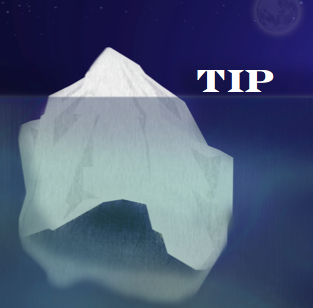
Over the years we have identified several features of Curiosumé that every VC and “investor” wants to change – but these features are so fundamental to the operation of Curiosumé that to change them would render the application useless. More clinical, the Math falls apart.
On the other hand, this phenomenon serves as a very powerful test of human nature. Violating one or more of the six tenets represents the temptation of control and power over others – people who seek to exploit other people cannot resist this temptation and will shortcut or manipulate one of the following 6 tenets, thus guaranteeing failure. Those whose hearts are truly focused on empowering people can easily resist, and even thrive, in an environment of collaboration and inclusion, thus guaranteeing success.
The Six Tenets of Curiosumé
You are forewarned, each of these six tenets pass directly against the grain of traditional venture capital and investment systems making the work difficult to fund by traditional means:
1. The topmost ontology must belong to the Commons. We specify Wikipedia, or other public databases for Curiosumé. There will always be a strong tendency from investors to want to own the private database or to define the ontology because this is the most tangible form of control. In Curiosumé all data must reconcile upward to the single ontology owned by the commons. Investors will have a strong desire to own the ontology and privatize the database – we must resist this.
2. Non-competitive ranking system. Our culture is steeped in tradition of competition; war, sports, even evolution (survival of the fittest), etc – all purport the necessity of competition as a means of arriving at the best solution. It was very difficult to find a suitable rating systems that does not invoke some form of competitive hierarchy. But in reality, Nature exhibits many more examples of collaboration than competition, yet collaboration is not intuitive to the Capitalist psychology. We are not saying that competition is bad, it is just inefficient on a crowded planet. Instead, there should be a perfectly valid market for everyone. There will be a strong tendency for investors to rank people on a hierarchy – we must resist this.
3. Self-selecting: People must self-identify their participation in a community. That way, they cannot cheat because they would only be cheating themselves. There is a strong tendency to tell people what to do, how to behave, and how to appear to a “market”. We must avoid this. If we can eliminate the incentive to cheat, then we can avoid the crippling friction of a punitive vetting mechanism in our processes. There will be a strong desire by investors to have a means of punishing people who game the game. We must resist this. Instead, we need to develop a system that allows people to game the game to improve the game. This is where creativity and innovation will come from.
4. “Learn-collaborate-teach” scale. It is extremely important that people are ranked ONLY on units of learning, units of collaboration, and units of teaching. The reason is that students and teachers do not compete with each other. Besides, people who is unwilling to teach others in an organization are just as useless as people who are unwilling to learn new things. Nobody knows everything and everyone knows something that can be taught to someone else. Learners represent demand for knowledge, teachers represent supply of knowledge, and collaborators represent factors of production in our new proto-economy. There will always be a temptation to create winners by producing and abandoning “losers”, we must avoid this.
5. Anonymity until the point of transaction (AUPOT): There is no reason anyone needs to know your identity until there is a tangible transaction, then and only then you must show your cards. Lack of privacy is what makes Big Data both invasive and unreliable. People acting anonymously behave differently (for better or worse) than those whose identities are known. The intrinsic unbiased activity data has completely different meaning than biased, impulsed, or controlled behaviors. The utility of such data would inherently be more beneficial to markets and society. There will always be a strong desire from investors to own the one-way communication channel (advertising, propaganda, control, etc) where they may impose controls – we must resist this.
6. Formation of the Asset: An asset can only be described in terms of a Quantity and a Quality of something. 100 gallons of drinking water is a completely different asset than 100 gallons of irrigation water. “100 gallons of water” without specifying the qualities of the water is not an asset. Curiosumé a claim as a “quantity” and a validation as a “quality” as a means of formatting a knowledge asset. This is called a unit asset and represents a node in the network. Investors will often want the asset to be described in terms of money where the components are explicitly risk vs return. We must arrive there a different way.
Conclusion
We are open to any new ideas on how we would build the Curiosumé application. However, the 6 tenets discussed here are non-negotiable features of Curiosumé that must remain intact otherwise the whole project will fail. Each one of the tenets rubs against the grain of current VC models, corporate investment models, even academic commercialization models. Obviously, these 6 tenets have made funding for our programs difficult.
On the other hand, the reasons why nobody has copied us is because they would have the same problems in funding. Breaking this legacy funding mold will be absolutely essential to emergence of a new economic paradigm.

